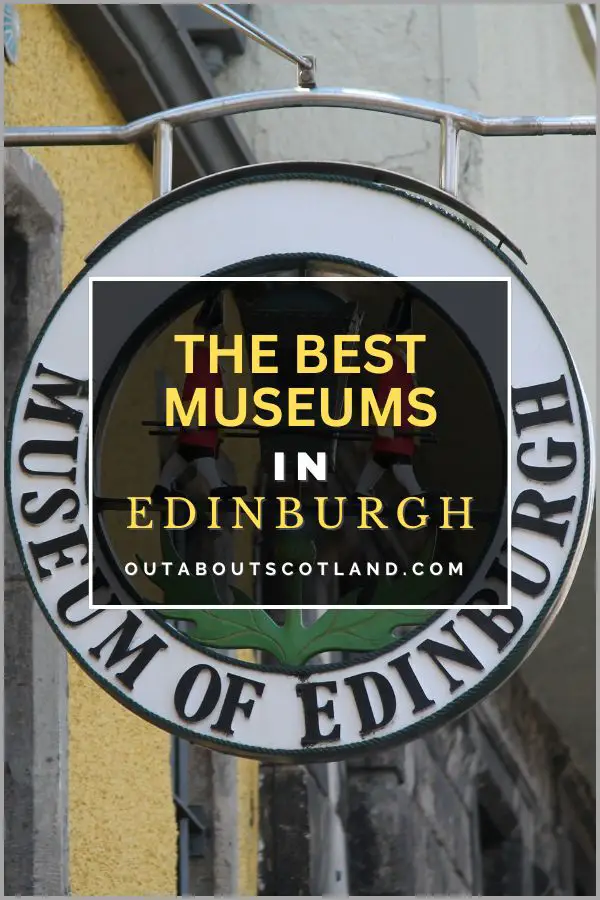The 200-foot Scott Monument is the world’s largest monument to a writer. This Gothic tower was constructed in commemoration of the Scottish novelist Sir Walter Scott, and it’s one of the most prominent features of Edinburgh’s New Town.
During a visit, tourists can climb the winding staircase inside the tower which opens up onto platforms that offer unrivalled views of the city. Discover everything you need to know about the Scott Monument in this complete visitor guide.
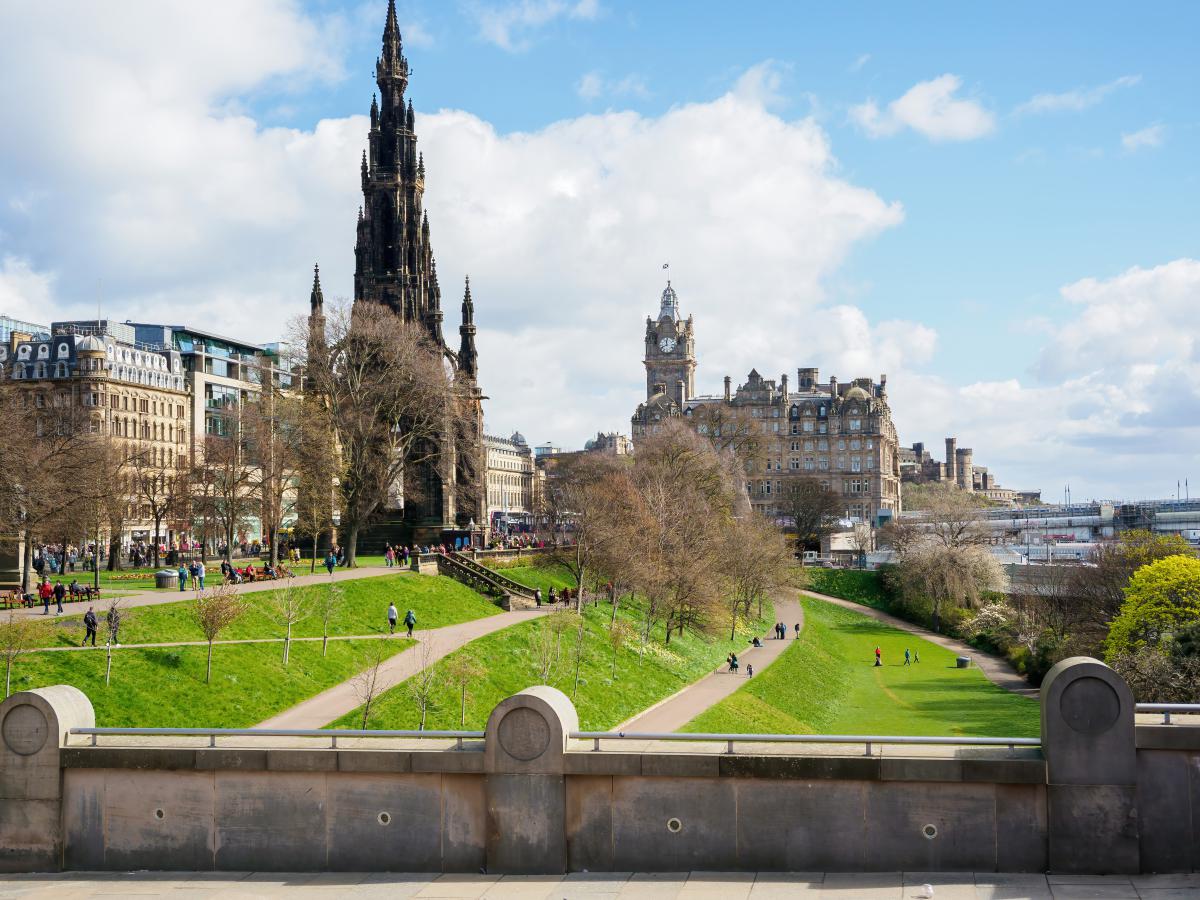
| Address: | East Princes Street Gardens, Edinburgh, EH2 2EJ |
| Opening Hours: | Open 7 days a week from 10 am to 3:30 pm |
| Admission Price: | Adults: £8 Children and Students: £6 Family pack (2 adults and 2 children or 1 adult, 3 children): £20 |
| Parking: | No on-site parking |
| Contact: | +44 (0) 131 529 4068 |
| Facilities: | None. Toilets, food and drinks available in Princes Street Gardens |
Overview
In the centre of Princes Street Gardens, not far from Waverley train station, stands one of the grandest man-made landmarks in Europe – the 200-foot-tall Scott Monument. This beautiful gothic-inspired structure is famous for being the largest monument to a writer anywhere in the world, and it has been an integral part of the Edinburgh cityscape since its completion in 1844.
On the death of Sir Walter Scott in 1832, it was decided by Edinburgh City Council that a monument should be made to commemorate both the man and the literature he gave to the world. A competition was subsequently run to see which of Scotland’s architects could design the best monument, which was eventually won by a young self-taught architect from Edinburgh – George Meikle Kemp.
A narrow winding staircase runs up the centre of the tower which opens onto viewing platforms, the highest of which sits at the top of 288 steps. If you have the stamina to climb all the steps you’ll be rewarded with one of the best views in Edinburgh looking across Princes Street and North Bridge, with Holyrood Park providing an impressive backdrop in the near distance.
You’ll find out about Scott and his monument by visiting the museum room on the first floor, and there are tours every half hour that will show you the important features of this architectural masterpiece as you make your way to the top.
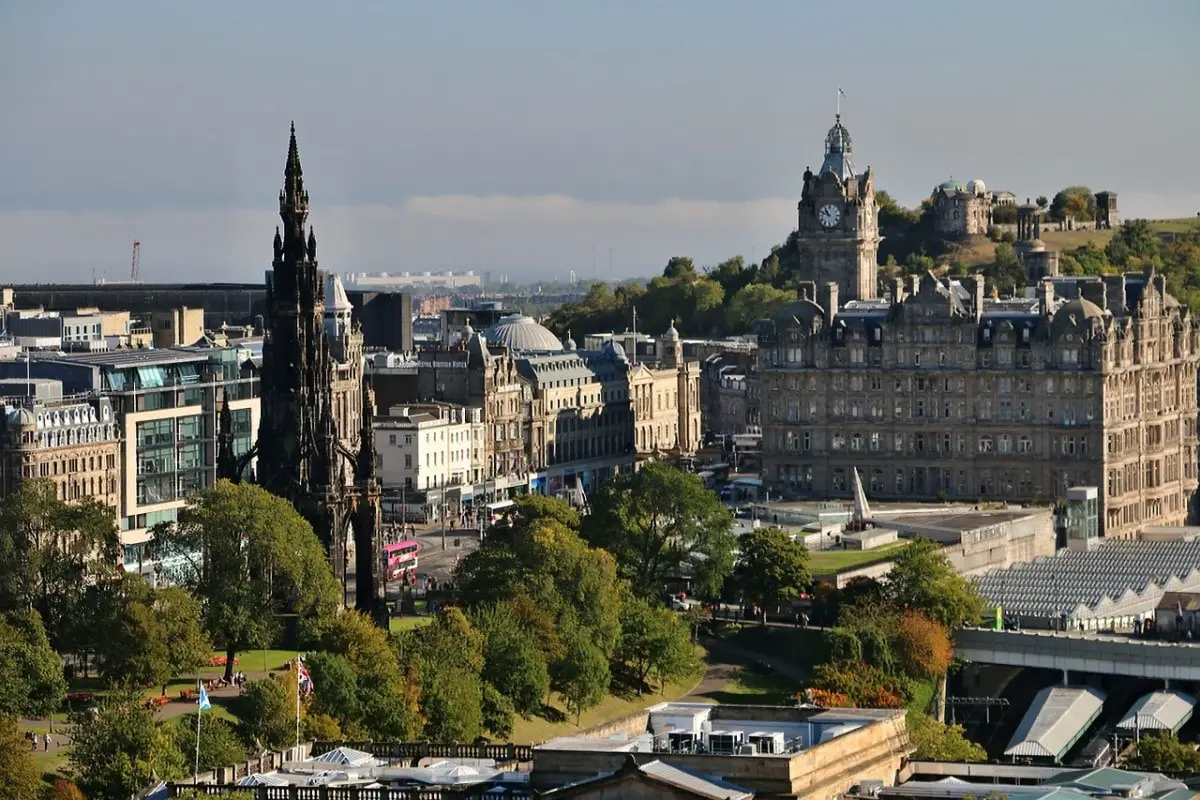
The Highlights
1: The Scott Monument’s intricate design and detailing are a testament to Victorian Gothic Revival architecture. Climbing to the top offers an unparalleled close-up view of the architectural details and the statues that adorn the structure.
2: The monument is a tribute to one of the greatest Scottish authors, Sir Walter Scott. Inside the monument, visitors can find a marble statue of Scott accompanied by his dog along with 64 statues of characters from his novels.
Visiting Tips
1: This attraction gets very busy, and in my opinion, they should reduce the number of visitors they allow in at any one time. Take my advice and visit early morning to avoid getting stuck behind lots of tourists on the claustrophobic staircase.
2: The Scott Monument is slap-bang in the middle of the city so you’ll get a great view from the top. After your visit, I recommend taking a look at the nearby Museum on the Mound, Calton Hill, John Knox House, the Scotch Whisky Experience and of course, Edinburgh Castle.
3: Hungry after climbing all those steps? There are more cafés on Princes Street than you can shake a stick at, but I recommend grabbing a snack at the café in the National Gallery of Art in the middle of Princes Street Gardens. The gallery has a terrace seating area that overlooks the gardens and is just a 1-2 minute walk from the Scott Monument.
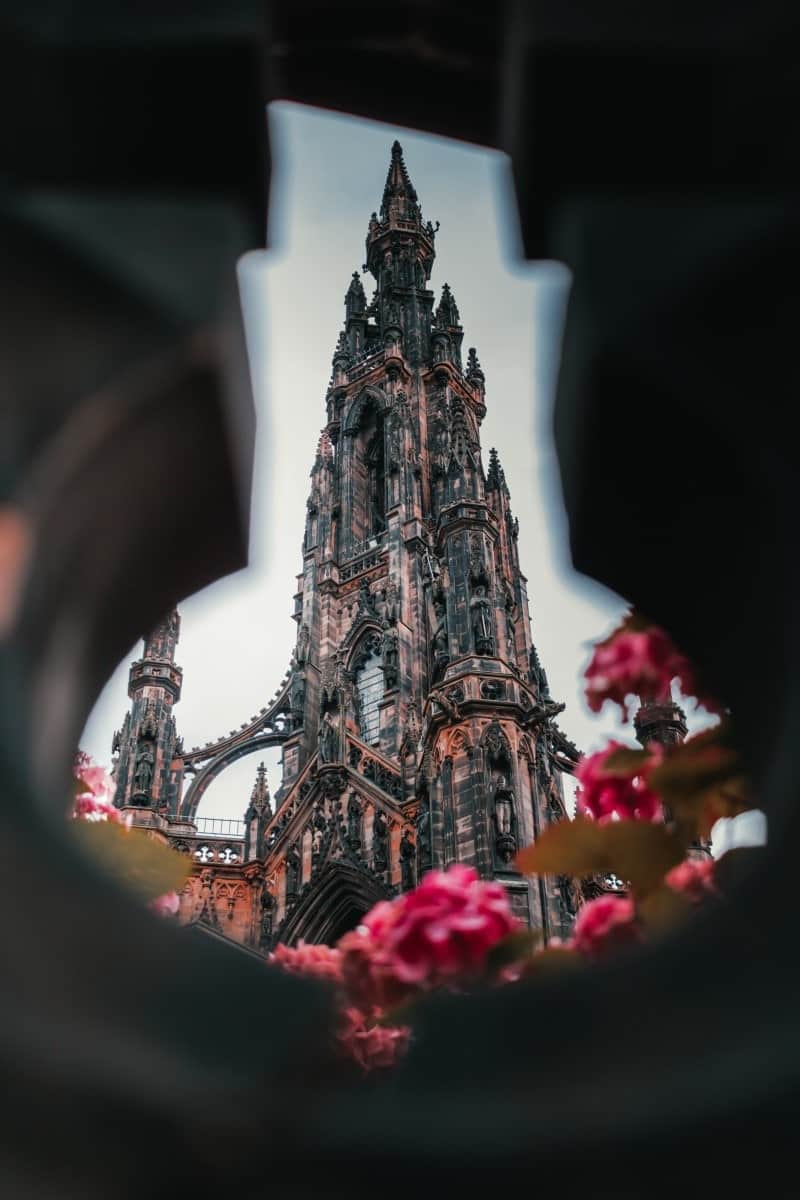
Tourist Information
Sir Walter Scott was a Scottish historical novelist, playwright and poet, and throughout his career he wrote many literary classics including Ivanhoe and Rob Roy. In fact, his work is so highly regarded it continues to be studied worldwide to this day.
The Scott Monument is the perfect place to get an overview of the city and if you climb the steps leading up the spiral staircase you’ll discover dazzling panoramic views across Edinburgh from the viewing platforms. This is one of the best ways to appreciate Edinburgh, with Princes Street running east to west, the Old Town stretching out to the south, and the imposing Salisbury Crags of Holyrood Park to the southeast.
The Scott Monument is a must-visit attraction whether you know anything about Sir Walter Scott or not, and the only negative I have is that the twisting steps at the top are very closed-in which can be a wee bit claustrophobic.
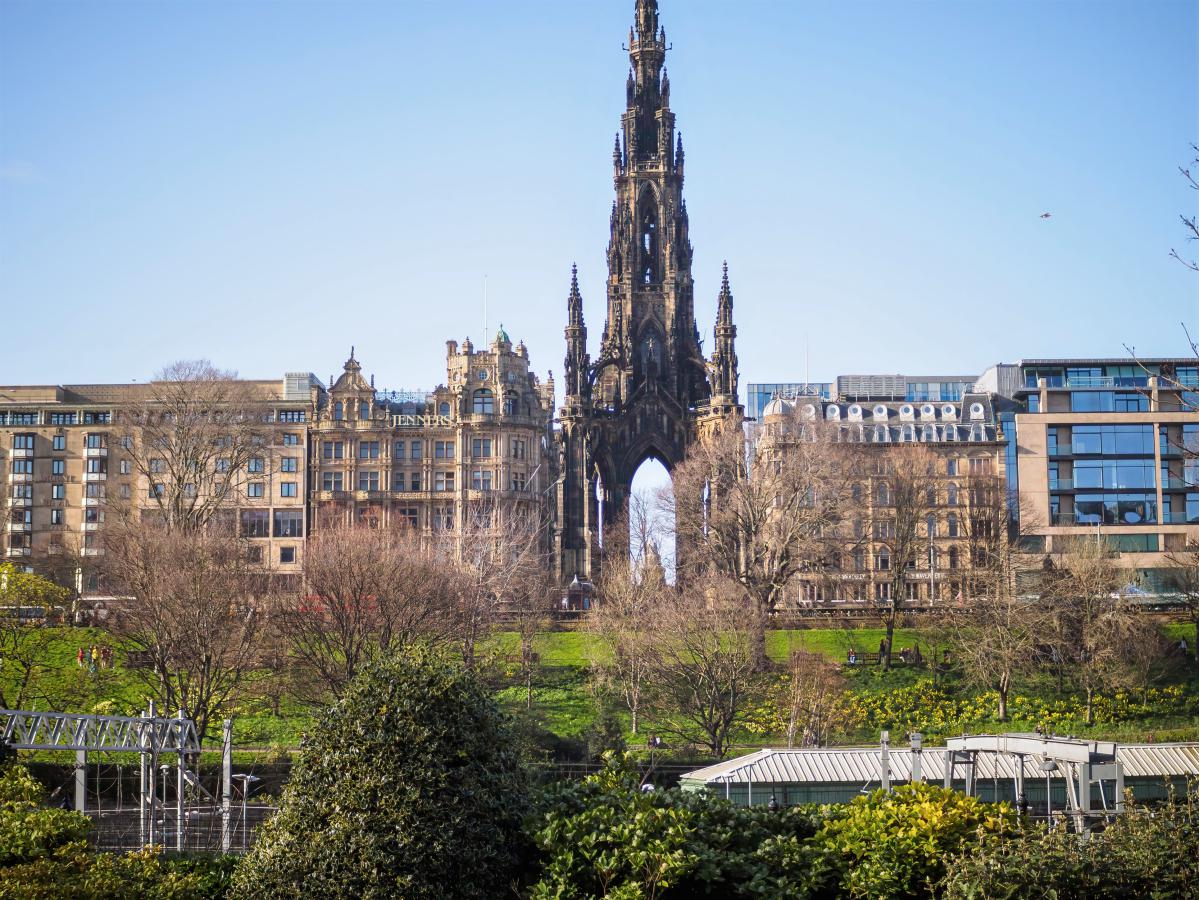
History
The monument was commissioned after a competition was run by the city council for ideas on how to commemorate Sir Walter Scott, with unknown architect George Meikle Kemp winning the contract. The monument took four years to complete, though at its unveiling the architect was absent having unfortunately fallen into the Union Canal and drowned two years earlier.
The foundation stone was laid in August 1840 and the works were finally completed in the autumn of 1844 at a total cost of £16,154, making it one of the world’s most costly monuments at the time.
At its base, the monument houses a white marble statue of Scott which depicts the writer taking a break from creating one of his many works, with his faithful dog Maida keeping him company. This statue took four years to carve from a single block of white marble that weighed over 30 tons. In total, the monument has 68 sculptures of characters from Scott’s novels, all of which were crafted by renowned Scottish sculptors.
The monument is a truly stunning structure, which is why some of the world’s earliest photos are of the monument being constructed. These photographs can be seen in many of the museums in Edinburgh.
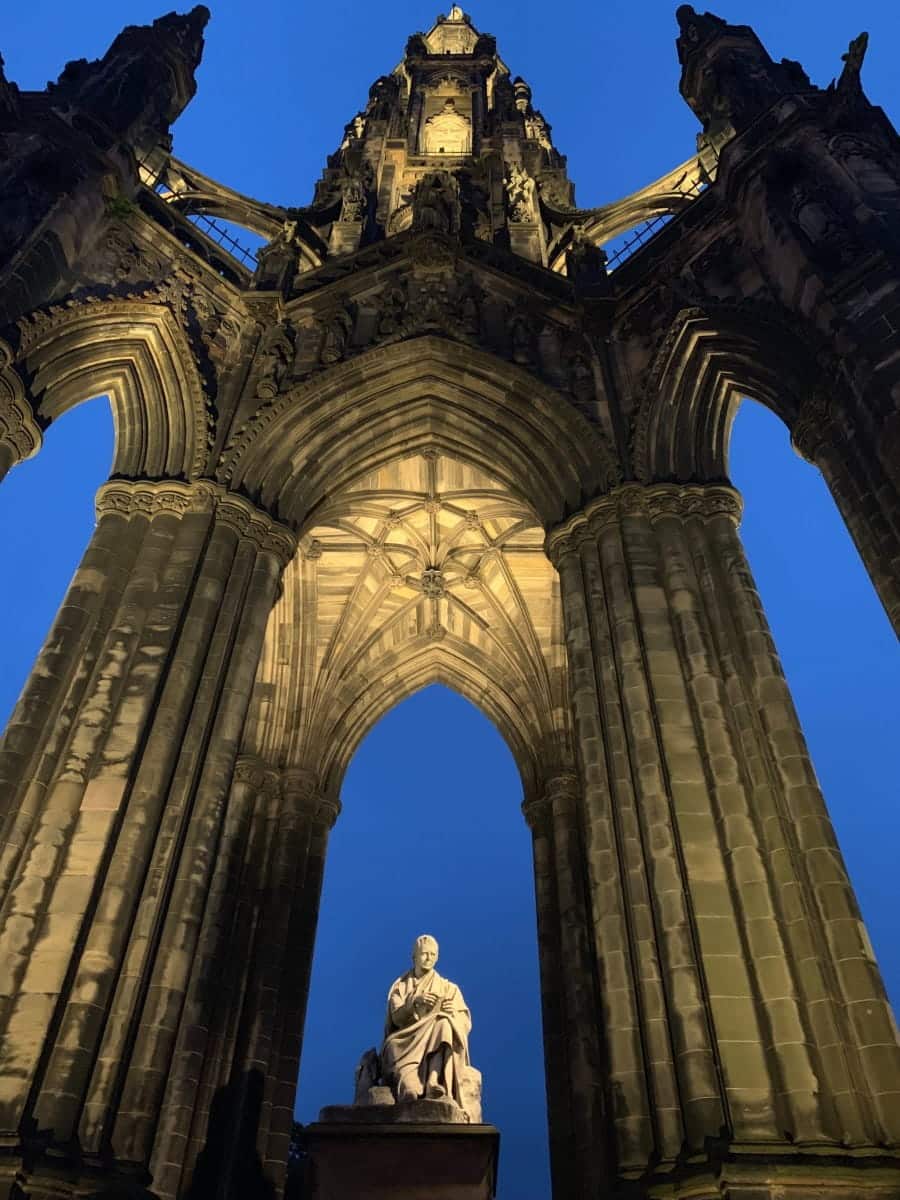
Things to Do
Climb the Steps to the Top: Climb the narrow, winding staircase of the Scott Monument – all 287 steps – to reach the topmost platform. Once at the top, you’re rewarded with a breathtaking panoramic view of Edinburgh. It’s a great way to get your bearings and spot other landmarks.
Learn about Sir Walter Scott: The monument is a tribute to the famous Scottish author Sir Walter Scott. Inside, you can take time to learn about his life and work thanks to a museum room halfway up which has displays and artefacts related to him.
Photography: With its detailed stone carvings and stunning views of the city, the Scott Monument is a paradise for photographers. Capture the monument’s ornate Gothic architecture from the ground level or the sweeping cityscape from the viewing platforms.
Join a Guided Tour: Take advantage of the guided tours offered at the Scott Monument. Knowledgeable guides will take you through its history, design, and the significance of the various statues adorning it. It’s a fantastic way to deepen your understanding and appreciation of this historic landmark.
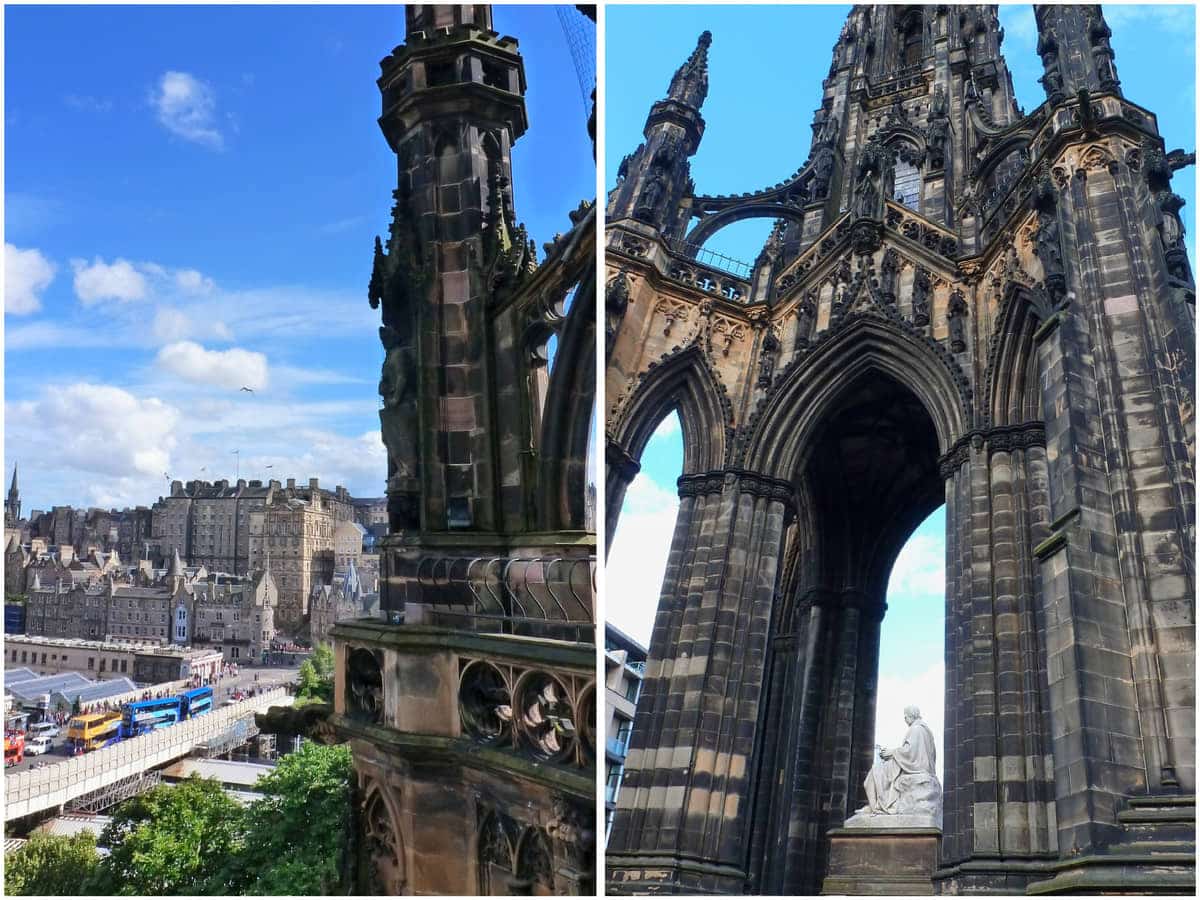
Things to Do Nearby
Balmoral Hotel. 1 Princes St, Edinburgh EH2 2EQ. 4-minute walk.
Grand Victorian hotel in Princes Street. The Balmoral Hotel sports a luxurious interior and has several spaces to eat and drink including the glass-domed Palm Court and the ultra-chic Bar Prince.
Princes Street Gardens.
A sizeable public park in the centre of Edinburgh. There are several monuments and statues inside the landscaped gardens including the Scott Monument. The east and west sections are split by the Scottish National Gallery.
Calton Hill. Edinburgh EH7 5AA. 12-minute walk.
A prominent landmark in Edinburgh that offers panoramic views of the city. Also the location of the city planetarium, the National Monument and the Nelson Monument.
Princes Street. 1-minute walk.
Arguably the most famous street in Scotland. Princes Street is the first port of call for most visitors to the city as it offers a wide range of shops and restaurants and borders Princes Street Gardens.
Museum on the Mound. The Mound, Edinburgh EH1 1YZ. 6-minute walk.
A museum located in the historic Bank of Scotland head office. Visitors can explore the history of money in Scotland with a collection of exhibits that include the country’s oldest banknote and £1 Million of real notes.
Frequently Asked Questions
How old is the Scott Monument?
The Scott Monument was 182 years old in 2022. It was built by George Meikle Kemp in 1841.
Why is the Scott Monument black?
The Scott Monument is built from locally-sourced yellow-coloured Binny Sandstone which is a type of shale stone that contains small amounts of oil.
The black discolouration on the Scott Monument is caused by pollution from vehicles which sticks to the oil in the stone, leaving a thick coating of soot.
Can you climb the Scott Monument?
Visitors can pay a fee to enter the Scott Monument to climb 287 steps up a winding staircase to the top, which opens up onto viewing platforms.
How long does it take to climb the Scott Monument?
It takes around 5-10 minutes to climb the 287 steps to the top of the Scott Monument without stopping.
However, visitors stop at the four levels inside the monument as well as the outside viewing platforms, so expect a visit to take around 30 minutes.






